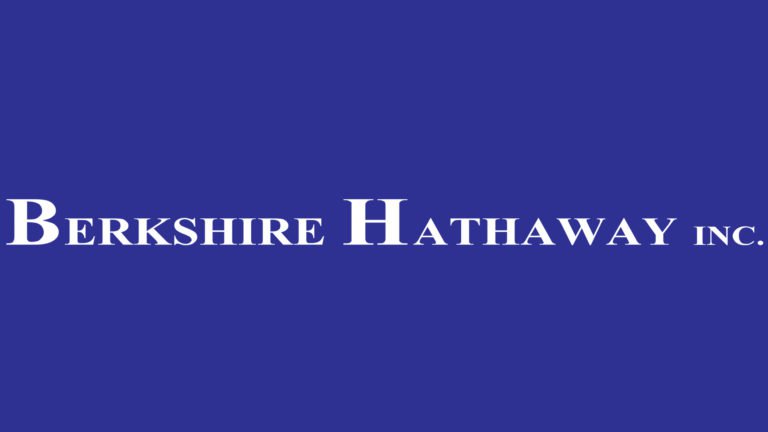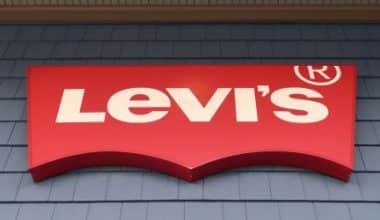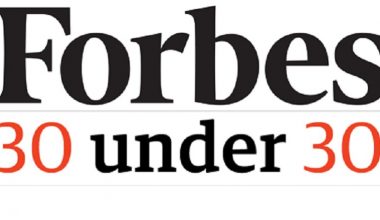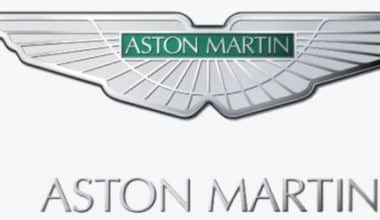Berkshire Hathaway is one of the world’s most successful investment firms, if not the most successful. Warren Buffet led the company from a textile manufacturing firm to a multinational holding company. The Berkshire Hathaway logo, on the other hand, is one of the most recognizable in the industry, and while you may not have known much about the company behind the logo before, you will after reading this article.
Continue reading to learn more about this iconic investment firm and how it has managed to keep the same logo for over 180 years.
Overview
In 1939, the Berkshire Hathaway emblem was unveiled. And ever since, nothing has changed. The logotype is dark blue, and the background is plain. The wordmark is simple and easily readable from any distance, thanks to the use of New Times Roman. Additionally, the color scheme highlights a sense of loyalty.
The logo represents one of the most successful investment firms in the world. Warren Buffett, the well-known investor known as “the Oracle of Omaha,” is in charge of it. Although the company started as a textile manufacturer, it began concentrating on insurance and other investments.
It has invested in various industries, including retail, energy, and rail transportation. There are about 60 companies that Berkshire Hathaway owns. It has also made investments in other significant publicly traded brands. You can mention companies like Apple, Coca-Cola, and American Express in this list.
The headquarters of Berkshire is located in Omaha, Nebraska. Additionally, it employs over 360,000 people worldwide. Warren Buffett continues to serve as the company’s chairman and CEO today.
The History & Meaning of Berkshire Hathaway’s Logo
Berkshire Hathaway’s logo is straightforward, unlike other businesses and brands occasionally choosing flashy and ornate designs. Its straightforward elements have contributed to its ability to become a memorable logo that has stood the test of time. This logo might appear straightforward, but thanks to its simple design, excellent legibility, and high scalability, regardless of the marketing channel, it has stood the test of time without ever needing any updates.
We’ll look more closely at this classic logo and its development below.
The original (and only) iteration of the Berkshire Hathaway logo dates from 1839
Berkshire Hathaway has been in business since 1839, and the company’s logo has existed for the same time. The company has only used one version of its logo because of its minimalistic elements, which convey the seriousness and professionalism of the larger Berkshire Hathaway brand.
A logo becomes the dependable representation of a brand when it hasn’t been updated in more than 180 years. The only thing you’ll notice about the logo is that it only contains the name of the company, with the first letters of each word (the “B” and the “H”) being a little bit larger than the other letters. Given the industry’s professional nature, it makes sense for the business to have a traditional, expert, trustworthy, and serious logo.
The Berkshire Hathaway Home Services logo’s initial iteration was released in 2014.
The logo for Berkshire Hathaway was never changed, but when the company’s home services division was introduced in 2014, a new logo was also unveiled. Because Berkshire Hathaway Home Services is a division of the larger company, it was crucial to have a second, distinct logo. Customers will recognize the traditional logo as the parent company if Berkshire Hathaway decides to grow again.
With its rounded letters and use of initials, the Berkshire Hathaway Home Services logo adds a little more creativity to the brand while incorporating many of the parent logo’s stylistic elements. The new marketing campaign tagline “Good to Know” was also unveiled alongside the launch of this logo.
Berkshire Hathaway Logo Font:
The font was chosen to match the classic elements of the Berkshire Hathaway logo. The Times New Roman font was selected for this logo. The font is a serif typeface created for and used by The Times, a British newspaper, though most of us are already familiar with it.
Berkshire Hathaway Logo Color:
Three official colors are used in the Berkshire Hathaway logo.
White is the first color you notice. White is occasionally used as the background color and other times as other elements of the logo, depending on the marketing medium the logo is printed on. The color white is frequently linked to emotions of security, purity, trust, modesty, possibility, and cleanliness.
Dark blue is the second color you’ll notice. Similar businesses in this sector frequently choose the color blue because it inspires feelings of inspiration, confidence, stability, intelligence, freedom, and loyalty.
Purple is the last color to appear on the logo. The color purple is frequently used to symbolize strength, luxury, royalty, wealth, dignity, and wisdom. Together, these three distinct color selections help communicate the fundamental elements of the Berkshire Hathaway brand without overtly stating them throughout the logo.
The Symbols in Berkshire Hathaway’s Logo:
The circle is the only image present in the Berkshire Hathaway logo. Even the circle is absent from the traditional Berkshire Hathaway logo. Instead, Berkshire Hathaway Home Services, a division of the larger brand, uses the circle in its logo. Circles stand for inclusivity, unity, wholeness, and eternity. All of these serve as the Berkshire Hathaway Home Services brand’s pillars.
What is the font on the Berkshire Hathaway logo?
Times New Roman rules the generic nature of the Berkshire Hathaway logo. Victor Lardent and Stanley Morison created the serif font. It was ordered by the British newspaper The Times in 1931. Additionally, it was published by American digital typesetting and typeface designer Monotype. It has a simple, timeless, and readable font.
What Is the Slogan for Berkshire Hathaway?
Berkshire Hathaway Home Services was introduced in 2014. It is a widely recognized real estate brand with ties to Warren Buffett. The company then unveiled its marketing campaign with the tagline “Good to Know” in the year’s final quarter. Ads for it appeared in newspapers and on television. Interestingly, the slogan alludes to trusted investor Warren Buffett’s endorsement of the company.
What Was Berkshire Hathaway’s Original Name?
Although Berkshire today is an investment firm, it gets its name from an 1839-founded textile manufacturing company. Oliver Chace established the business, headquartered in Valley Falls, Rhode Island. Warren Buffett later bought it in 1964 and kept the name.
Who Controls the Most Share in Berkshire Hathaway?
The fact that Warren Buffett is the business’s owner, chairman, and CEO is well-known. However, Berkshire Hathaway is also profitable for other renowned investors. You can mention the Bill & Melinda Gates Foundation, The Vanguard Group, SSgA Fund Management, and BlackRock Fund Advisors. The same goes for Norges Bank Investment Management and Geode Capital Management.
What Colors Represent Berkshire Hathaway?
There are three official colors for Berkshire Hathaway. These are purple, black, and white. These hues represent the brand’s principles when combined. And among them are dependability, simplicity, and loyalty. Once more, they exude an air of nobility, security, and humility.
How Did Warren Buffet Make His Money?
So you’re interested in learning how the man known as “the Oracle of Omaha” became wealthy. He got his start reading business books and selling goods as a teenager. He offered a variety of goods for sale, including chewing gum, stamps, Coca-Cola bottles, magazines, and newspapers.
Warren acquired his first stock in an oil company at the age of about eleven. Interestingly, he purchased three shares at $38 each. The stock was then sold for a profit of $6 for $40 per share. However, when the same stock later increased to $200 per share, he realized the value of patience.
When he was fifteen, Warren Buffett invested $1,200 in a 40-acre Nebraska farm. By delivering newspapers for the Washington Post, he raised this sum. He continued his education by enrolling in universities and reading more business books to broaden his understanding of the industry.
After acquiring some practical business knowledge, Buffett established his investment firm. He raised money from family and friends to fund the business. Warren also made a $100 investment. He kept making investments and eventually acquired Berkshire Hathaway.
Warren had transformed Berkshire Hathaway into a holding company by 1985. Today, he earns billions of dollars in revenue and profit from this multinational conglomerate. He has consequently emerged as one of the most prosperous investors, controlling about sixty businesses through Berkshire Hathaway.
What Justifies Berkshire’s Two Stocks?
Berkshire Hathaway holds Class A and Class B stock options. As a result, many investors have the freedom to select the stock that best suits their level of risk tolerance. One significant difference between the two stocks is their price. The Class B stock is moderately priced compared to the premium Class A.
The business initially only offered one class of stock. Additionally, the price was high to draw similarly-minded, long-term investors. To meet the demand for a stock with a lower price, the company did issued Class B in 1996. The public was given access to 517,500 Class B shares as a result.
The Class B stock has fewer voting rights than the Class A stock. But once more, to convert a Class B share into a Class A share, you must first sell the Class B share and then buy the Class A share. On the other hand, it is simple to convert a Class A stock into a Class B stock.
Warren Buffett: Who Is He?
American businessman, investor, and philanthropist Warren Buffett. In Omaha, Nebraska, on August 30, 1930, Howard and Leila Buffett gave birth to him. He went to Alice Deal Junior High School and Rose Hill Elementary School.
Warren later earned his high school diploma from Woodrow Wilson. He became very interested in business and investing as a young man. As a result, at age seven, he took the book One Thousand Ways to Make $1000 out of the public library in Omaha.
Unexpectedly, this book made him fall in love with business. Chewing gum, Coca-Cola bottles, magazines, and newspapers are just a few of his earliest ventures. He also once had a job at the grocery store owned by his grandfather.
Warren enrolled at the University of Pennsylvania’s Wharton School in 1947. He eventually graduated from the University of Nebraska after transferring there. Warren also holds a degree from Columbia Business School. He received his Master of Science in Economics from there in 1951.
Read Also: Robinhood Logo: History, Evolution & Meaning
Once more, Warren based his investment philosophy on value investing, a Benjamin Graham-developed idea. He also attended and received his degree from the New York Institute of Finance after completing his master’s at this esteemed institution.
In 1951, he started his professional career by working at Buffett-Falk & Co. Up until 1954; he was a salesman of investments. Then, from 1954 to 1956, he was employed by Graham-New Corp. as a securities analyst. Until 1969, he also served as a general partner at Buffett Partnership.
Warren acquired Berkshire Hathaway, a manufacturer of textiles, in 1965. The company’s new president was announced as Ken Chace during a board meeting. But he ended the partnership in 1966 and began concentrating on investments and insurance.
Finally, he was appointed chair and CEO of Berkshire Hathaway, Inc. in 1970. The business has become an empire under his direction, diversifying into numerous industries. Thanks to Berkshire Hathaway, Warren Buffett’s net worth as of March 2022 was $117 billion.
He currently holds the sixth-richest position in the world. Susan Thompson and Warren Buffett were wed at the Dundee Presbyterian Church 1952. The following year, they gave birth to Susan Alice Buffett, their first child. Peter Buffett and Howard Graham Buffett then came after.
Sadly, he lost his wife in 2004, which made it possible for him to wed Astrid Menks two years later.
Berkshire Hathaway’s Evolution
1839: Valley Falls Company was Established
Although Berkshire Hathaway is widely known as an investment firm, that was not how the business began, Oliver Chace established Berkshire Hathaway as the Valley Falls Company, a textiles manufacturer, in Valley Falls, Rhode Island, in 1839.
1955: Berkshire Hathaway, Inc. was formally Established
The Hathaway Manufacturing Company and Berkshire Cotton (also known as Berkshire Fine Spinning Associates) merged, establishing Berkshire Hathaway, Inc.
Berkshire Hathaway now has 15 facilities, over 12,000 employees, and more than $120 million in revenue thanks to this merger.
1964: Warren Buffet bought Berkshire Hathaway
In 1964, Warren Buffet formally acquired Berkshire Hathaway. He decided to keep the same name when he bought the business. Due to this acquisition, Warren used Berkshire Hathaway, Inc. as his primary investment vehicle. In 1962, Warren developed an interest in the company after starting to purchase Berkshire Hathaway stock.
Warren directed Berkshire Hathaway to acquire two businesses three years later, in 1967. The National Indemnity Company was the first insurance provider Berkshire Hathaway ever bought. After making this purchase, Berkshire Hathaway also bought the National Fire & Marine Insurance Company.
1985: Berkshire Hathaway’s Textile Division Was Shut Down
Warren decided to shut down Berkshire Hathaway’s textile division to concentrate the company on insurance and other investments.
1996: Berkshire Hathaway Buys More Businesses
Berkshire Hathaway acquired GEICO, another insurance provider, in 1996. In 1998, two years later, the business also bought General Reinsurance.
1996: Debut of Berkshire Hathaway’s Class B Stock
Berkshire Hathaway only had their Class A stock before 1996. A second stock, known as Class B, was introduced to the market in 1996, and Berkshire Hathaway made 517,500 shares available to the general public. Their investors could select the stock that best suited their needs thanks to the availability of two stock options.
The Class B stock was a more cost-effective alternative for more investors, whereas the Class A stock carries a premium price. Class B offers its investors fewer voting rights because it is priced less highly. Additionally, holders of Class B stock are unable to convert their shares into Class A stock. The only catch is that buyers of Class A stock can convert their shares into Class B stock.
2022: Berkshire Hathaway continues to be an industry leader
Warren made every choice for Berkshire Hathaway to foster the company’s expansion, and his plan was successful. Currently, Berkshire Hathaway employs over 360,000 people and brings in about $268 billion annually. The Fortune 500 list of companies ranks Berkshire Hathaway at number six, as if that weren’t enough proof that a business is booming.
Obstacles in the Way
While Berkshire Hathaway’s development is a tale of tactical choices that propelled the business to the top of its sector, the company hasn’t been exempt from hitting obstacles. The stock market has impacted Berkshire Hathaway as an investment company. Berkshire Hathaway suffers when the stock market declines and vice versa. The only distinction between Berkshire Hathaway and other businesses is that Berkshire Hathaway is led by Warren Buffet, who has a strong track record of steering his company in the right direction.
Related Articles
- SAFEST STOCKS TO BUY: Long-Term Safe Stocks to Buy in 2023
- LARGEST INSURANCE COMPANIES IN THE UNITED STATES
- Value Investing: Detailed Guide To Value Investing Strategy
- TOP INVESTMENT COMPANIES: Top 10 Investment Companies in USA
- WARREN BUFFETT PORTFOLIO 2023: What is in his Current Portfolio?






